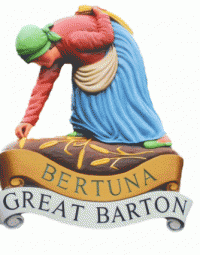Neighbourhood Plan Background Information on Neighbourhood Plans
The Neighbourhood Plan is a document that is written by and for the community to help guide future development within the Parish of Great Barton. It will explain what residents and businesses expect to see happen in the Parish. It will help us to ensure that we get the right sort of development that will protect and enhance the character of our village and still meet the needs of our growing population.
Once the final document is written and has passed all of the relevant checks you will be asked to vote on it. If 50% of those that vote agree that it is acceptable it will become an official document (a made Plan) that will be used to determine planning applications against. This is an important document and it is important that we get it right. Your help in that process is appreciated.
Background to Neighbourhood Plans
A Neighbourhood Plan can:
- Decide where and what type of development should happen in the neighbourhood
- Promote more development than is set out in the Local Plan
- Include policies, for example regarding design standards, that take precedence over existing policies in the Local Plan for the neighbourhood - provided the Neighbourhood Plan policies do not conflict with the strategic policies in the Local Plan.
A Neighbourhood Plan cannot:
- Conflict with the strategic policies in the Local Plan prepared by the local planning authority, (St Edmundsbury Borough Council)
- Be used to prevent development that is included in the Local Plan
Typical things that a Neighbourhood Plan might include:
- The development of housing, including affordable housing, and bringing vacant or derelict housing back into use.
- Provision for businesses to set up or expand their premises.
- Transport and access (including issues around roads, cycling, walking and access for disabled people).
- The development of schools, places of worship, health facilities, leisure and entertainment facilities, community and youth centres and village halls.
- The restriction of certain types of development and change of use, for example to avoid too much of one type of use.
- The design of buildings.
- Protection and creation of open space, nature reserves, allotments, sports pitches, play areas, parks and gardens, and the planting of trees.
- Protection of important buildings and historic assets such as archaeological remains.
- Promotion of renewable energy projects, such as solar energy and wind turbines.



